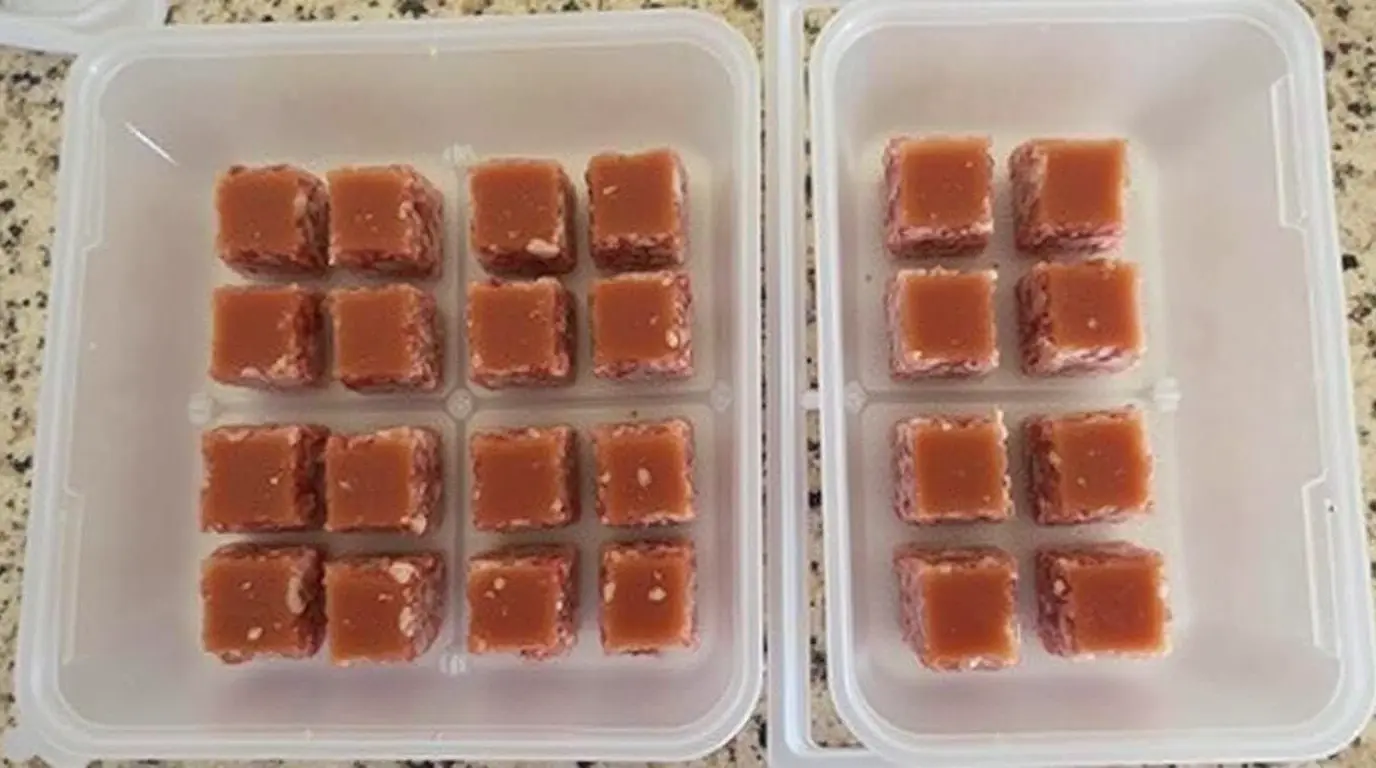Don’t let that liquid gold go to waste.
Yes – you can freeze beef stock, and it’s easier than you think. Whether it’s homemade or store-bought, freezing your beef stock the right way means always having deep, rich flavor on hand for soups, stews, and sauces. Let’s break it down step-by-step.
Table of contents
Why Freezing Beef Stock is a Good Idea
Freezing beef stock is an excellent way to make sure you always have this essential ingredient on hand without worrying about it spoiling before you can use it. Whether you make large batches of stock for meal prepping or have leftovers after a cooking session, freezing is an ideal solution. Here’s why freezing beef stock is worth considering:
Convenience of Having Beef Stock on Hand
One of the biggest advantages of freezing beef stock is the convenience it offers. Stocking your freezer with beef stock means you don’t have to make it from scratch every time you need it. If you frequently use beef stock in your recipes, having frozen portions readily available can save you a lot of time.
Instead of waiting hours for stock to simmer and develop flavor, you can simply thaw and heat your pre-made stock for a quick and easy meal addition.
Reducing Food Waste
Freezing beef stock is also a great way to reduce food waste. When you make homemade stock, it’s easy to end up with more than you can use before it spoils. Instead of discarding the excess, freezing it allows you to preserve the stock for future meals.
Whether you make stock in large quantities or have leftovers from a smaller batch, freezing ensures that your hard work doesn’t go to waste. Plus, it helps you make the most of ingredients like beef bones and vegetables that might otherwise be tossed out.
How to Freeze Beef Stock Properly
Freezing beef stock is relatively simple, but to ensure that it stays fresh and flavorful, it’s important to follow the right steps. Here’s how you can freeze beef stock properly to make sure it holds up well in the freezer.
Step-by-Step Guide to Freezing Beef Stock
- Cool the Stock Before Freezing
It’s essential to cool your beef stock before freezing it. If you freeze it while it’s still hot, it could raise the temperature in your freezer, potentially compromising the quality of other frozen foods. Allow your stock to cool at room temperature for about 30 minutes, then transfer it to the refrigerator to chill further. It’s recommended to wait until the stock is completely cooled, ideally within 2 hours, to ensure it’s safe to freeze. - Choose the Right Containers for Freezing
The next step is choosing the right containers to store your beef stock in. Freezer-safe glass containers, BPA-free plastic containers, or heavy-duty freezer bags are ideal choices. Glass containers are great for long-term storage but ensure they have enough space for the stock to expand as it freezes. If you’re using plastic containers or bags, make sure they are airtight to prevent freezer burn. - Leave Room for Expansion
Liquids expand when frozen, so it’s important to leave about an inch of space at the top of your container. This will allow the stock to expand as it freezes without causing the container to crack or spill. Be mindful of the space needed when filling your containers.
Tips for Freezing in Small Portions

If you don’t want to thaw a large batch of beef stock at once, freezing it in small portions is a smart idea. This way, you can easily thaw only what you need without wasting any stock.
- Use Ice Cube Trays: Pour your beef stock into an ice cube tray and freeze. Once frozen, transfer the cubes to a freezer bag. Each cube will be roughly 1–2 tablespoons of stock, making it perfect for small recipes or when you only need a little bit of stock.
- Use Freezer Bags: For even easier portioning, pour the beef stock into freezer bags and lay them flat in the freezer. Once frozen, you can break off the portions you need. Freezer bags are space-efficient and make it easy to store multiple portions of beef stock.
By freezing in small portions, you ensure that you don’t waste stock and that it’s easy to thaw exactly how much you need for your recipes.
Check out our chicken bone broth recipe for another freezer-friendly homemade stock
How Long Can Beef Stock Be Frozen?
Knowing how long beef stock can be frozen ensures that it maintains its quality and flavor. Properly frozen stock can last for several months, but it’s important to be aware of the ideal storage times to avoid any decline in taste or texture.
Shelf Life of Frozen Beef Stock
When stored properly in the freezer, beef stock can last for up to 3–4 months without significant loss of flavor or quality. If you plan to keep the stock frozen for an extended period, it’s best to label your containers with the date of freezing so you can keep track of how long it’s been stored.
It’s important to note that while beef stock can technically last longer in the freezer, its quality may start to degrade after the 4-month mark. To get the best flavor and texture, try to use it within this window.
Signs Beef Stock Has Gone Bad After Freezing
While beef stock can be safely frozen for months, it’s possible that it may lose its quality over time. Here are some signs that beef stock may no longer be good to use:
- Off smell or sour odor: If the stock has an unpleasant or sour smell after thawing, it may have spoiled and should be discarded.
- Separation or discoloration: While some separation is natural after freezing, a drastic change in color or an unusual layer of fat or solids on top could indicate that the stock is no longer safe to consume.
- Freezer burn: If the stock appears discolored or has ice crystals on the surface, freezer burn may have occurred, which can affect the flavor. While freezer-burned stock is still safe to use, the taste may not be as rich and flavorful.
If you notice any of these signs, it’s best to discard the stock rather than risk using it in your recipes.
“…a flavorful base for hearty soups or stews like this beef stew seasoning recipe.”
How to Thaw Beef Stock After Freezing
Once you have frozen your beef stock, knowing the proper methods for thawing it is essential to maintain its flavor and texture. Thawing too quickly or improperly can lead to changes in the quality of the stock. Here’s how to safely thaw beef stock to ensure it stays just as delicious as when it was first made.
Safe Methods for Thawing Beef Stock
There are several ways to thaw beef stock, and the method you choose will depend on how much time you have and how quickly you need the stock.
- Thawing in the Refrigerator
The safest way to thaw beef stock is to place it in the refrigerator. This method may take several hours, or even overnight, but it ensures that the stock thaws slowly and remains at a safe temperature. By thawing in the refrigerator, you minimize the risk of bacteria growth, making this the most reliable method. - Thawing Using Cold Water
If you’re in a hurry, you can place the beef stock (in a sealed container or freezer bag) in a bowl of cold water to thaw it faster. Change the water every 30 minutes to keep it cold. This method can thaw stock in a few hours, depending on the amount and size of the container. - Thawing in the Microwave
For even quicker thawing, you can use the microwave. Set your microwave to a low or defrost setting, and microwave the stock in short intervals, stirring in between. Be careful not to overheat or cook the stock, as this could affect its texture and flavor.
How to Reheat Beef Stock
Once your beef stock is thawed, you’ll likely want to reheat it for use in your recipes. Here are a few tips for reheating:
- On the Stovetop
The easiest way to reheat beef stock is to simply pour it into a saucepan and heat it on the stovetop over medium heat. Stir occasionally to ensure it heats evenly. If your stock has separated a bit during freezing, give it a stir as it warms up. - In the Microwave
If you need to reheat a small amount of stock, you can also do so in the microwave. Heat it in a microwave-safe bowl in 30-second intervals, stirring in between, until it reaches your desired temperature. - Avoid Boiling
While reheating beef stock, avoid bringing it to a rolling boil. High heat can cause the stock to reduce too much, changing its flavor and texture. Gently heat it until it’s steaming and ready for use in your recipes.
Just like beef stock, Chicken Bone Broth can also be frozen to preserve its rich flavors and nutrients for later use
How do you store your homemade beef stock, freezer cubes or full containers?
Drop your best tip in the comments and tag a home cook who could use this advice!
Frequently Asked Questions
How long can I freeze beef stock?
Up to 6 months. For best flavor, use within 3 months and label containers with the freeze date.
Can I freeze beef stock in glass jars?
Yes, but use wide-mouth jars and leave at least 1 inch of space to avoid cracks from expansion. Let the stock cool completely before freezing.
Should I freeze it in large or small portions?
Both work. Freeze in 1–2 cup portions for soups, or use ice cube trays for quick flavor boosts in sauces.
Can I refreeze beef stock after thawing?
It’s not recommended. Only refreeze if the stock was thawed in the fridge and never heated.

